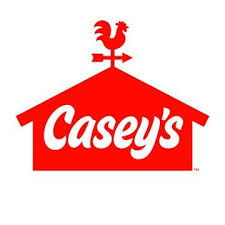Rural economy at 5-year low, Iowa’s China exports decline 81% year over year

Business Record Staff Oct 16, 2025 | 10:23 am
4 min read time
884 wordsAll Latest News, Economic Development
Seven out of 10 bankers agree with the approach President Donald Trump is taking toward trade with China, while the rural economy has hit a five-year low. Those are the results of the latest Rural Mainstreet Index produced by Creighton University economist Ernie Goss. The October index is at 34.6, its lowest level since May 2020. It’s the eighth time since 2020 that the index has sunk below growth neutral, or 50.0.
The index is created from monthly surveys of rural bank CEOs in a 10-state region in the Midwest reliant on the agriculture and energy sectors.
“Weak agriculture commodity prices for grain producers continue to dampen economic activity in the 10-state region. While tariffs are producing higher economic volatility, 72% of bank CEOs gauge President Trump’s approach toward Chinese trade as ‘about right.’ This is almost unchanged from April, when the same question was asked,” stated Goss, who is the Jack A. MacAllister chair in regional economics at Creighton.
Survey highlights include:
- For the 17th time in the past 18 months, farmland prices sank below growth neutral.
- Farm equipment sales dropped below growth neutral for the 26th straight month.
- 72% of bank CEOs gauge Trump’s approach toward Chinese trade as about right.
- Farm loan delinquency rates rose from a very low 1.1% in June of this year to 1.6% this month.
- 84.6% of bankers support Trump’s calling for $10 billion in support to U.S. farmers.
- Regional exports of agriculture and livestock to China plummeted by 85.7% for 2025, compared to the same period in 2024.
According to Jeff Bonnett, president of Havana National Bank in Havana, Ill., “We are definitely experiencing the pains of the ag crisis [defined as a time of intense difficulty, trouble or danger].”
Farming and ranch land prices: For the 17th time in the past 18 months, farmland prices slumped below growth neutral. The region’s farmland price dropped to 37.0 from 45.8 in September.
“Elevated long-term interest rates, higher input costs and below breakeven grain prices put downward pressure on farmland prices,” stated Goss.
Jim Eckert, executive vice president and trust officer of Anchor State Bank in Anchor, Ill., said, “Harvest is well underway in our area of Central Illinois. Soybean yields are similar to the 2024 crop. Corn yields appear to be 5-10% lower than last year.”
Farm loan delinquency rates rose from a very low 1.1% in June of this year to 1.6% this month.
About 84.6% of bankers said they support Trump’s call for $10 billion in support to U.S. farmers. “Current grain prices have pushed a high share of farmers’ net cash flow into negative territory. While it will not cure the problem, it will help,” Goss stated.
Terry Engelken, vice president at Washington State Bank in Washington, Iowa, said, “I would prefer that Trump work out a trade deal with China rather than providing the 10 billion in relief.”
According to trade data from the International Trade Association, regional exports of agriculture goods and livestock for the first seven months of 2025, compared to the same period in 2024, fell from $6.9 billion in 2024 to $6.2 billion in 2025 for a decline of 10.3%. Regional exports of agriculture and livestock to China for the first seven months of 2025 sank to $131.9 million, from $915.4 million for the same period in 2024, for a downturn of 85.7%.
Farm equipment sales: The farm equipment sales index increased to a very weak 18.8 from 15.2 in September.
“This is the 26th straight month that the index has fallen below growth neutral. High input costs, tighter credit conditions, low farm commodity prices and market volatility from tariffs are having negative impacts on purchases of farm equipment,” stated Goss.
Banking: The October loan volume index climbed to 72.0 from September’s 70.0. The checking deposit index fell to 52.0 from 54.0 in September. The index for certificates of deposits and other savings instruments dropped to 50.1 from 60.0 in September. Federal Reserve interest rate policies have boosted CD purchases above growth neutral for 35 straight months.
Hiring: The new hiring index for October sank to 44.0 from 48.0 in September. Job gains for non-farm employers have been soft for the last several months.
Confidence: Rural bankers remain pessimistic about economic growth for their area over the next six months. The October confidence index remained at September’s 32.7.
Home and retail sales: October home sales slumped to 40.0 from September’s 48.0. Regional retail sales were fragile with a reading of 36.0, which was up from 34.8 in September.
Iowa: October’s index for the state climbed to 37.7 from 30.3 in September. Iowa’s farmland price index for October declined to 43.0 from September’s 45.5. Iowa’s new hiring index for October increased to 46.7 from 41.2 in September.
Iowa’s year-to-date exports of agricultural goods and livestock reached $1.1 billion in 2025, up 19.4% from $908.2 million in the same period of 2024, according to data from the ITA. This was in sharp contrast to Chinese exports, which plunged 81.1% over the same period, highlighting a stark decline in that key market.
The index provides the most current real-time analysis of the rural economy. Goss and the late Bill McQuillan, former chairman of the Independent Community Banks of America, created the monthly economic survey and launched it in January 2006.










